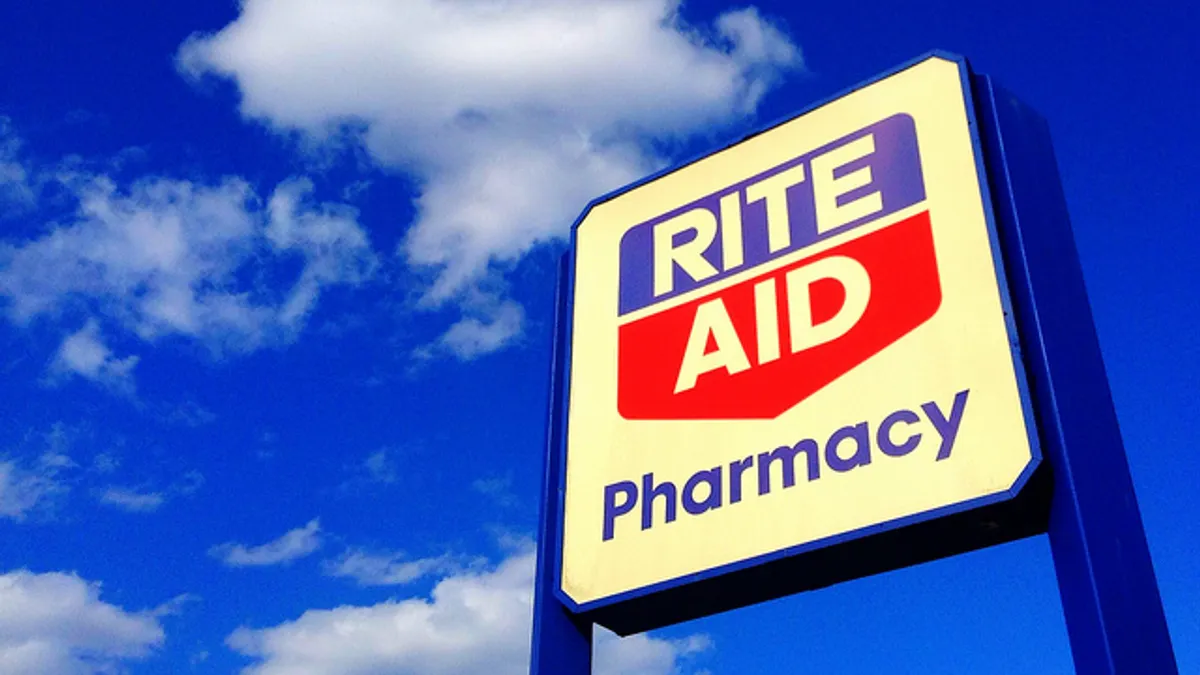Dive Brief:
- Rite Aid on Thursday reported second quarter revenue of $5.4 billion, some $100 million more of its sales in the year-ago period, according to a company release. Same-store sales in the drug store retailer's front-end retail operations fell 0.1% while its retail pharmacy same-store sales increased 1%.
- The company posted a net loss of $352.3 million for the quarter, a steep decline from the year-ago period's net income of $188.4 million. The FactSet consensus had called for a breakeven quarter from Rite Aid, while the company's revenue exceeded estimates of $5.36 billion, according to MarketWatch.
- CEO John Standley said the company was "accelerating" its standalone strategy after the Federal Trade Commission blocked a full merger between Rite Aid and Walgreen's last year, and shareholders rejected its merger with Albertsons this summer. (The FTC later approved Walgreen's acquisition of about 2,000 Rite Aid stores.)
Dive Insight:
Standley said Rite Aid is already benefiting from turnaround efforts and a "standalone" strategy, something the drug store retailer needs after two failed mergers in three years.
In a conference call with analysts, Standley called out as a "key highlight" of Q2 "our success in driving top-line momentum in terms of revenue, same-store sales and prescription count," according to a Seeking Alpha transcript. Overall, he said the company was focused on growing revenue, increasing efficiency and boosting its bottom line.
On the retail side, Standley said Rite Aid is looking to capitalize on its valuable wellness brand, refine its merchandising and expand its omnichannel capabilities.
The company needs to accelerate sales and stem its losses to get its books in order. It could also boost Rite Aid's value should it ever put itself on the market again. The company's shareholders opposed its merger with Albertson's specifically because they said the grocer undervalued Rite Aid.
Some Albertsons investors didn't want to take on a weak pharmacy retailer, either. Which may all be for the best, as some analysts found the reasoning behind the merger murky to begin with.
"A huge question mark always hung over how the combination of the two businesses would have boosted growth and created meaningful transformation," Neil Saunders, managing director with GlobalData, wrote in an email sent to Retail Dive's sister publication Food Dive. "The parties talked enthusiastically about evolving themselves into a food, health and wellness powerhouse but never spelled out what form this would take or how it would come about."













